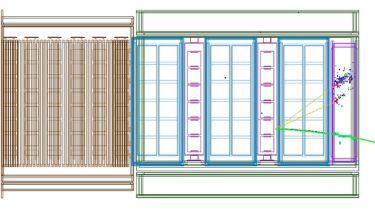Neutrino physics
In Sheffield, we study the way that neutrino flavours mix as the neutrinos travel from their birthplace, an effect known as neutrino oscillation.

Uncharged, almost massless, and feeling only the weak interaction and gravity, neutrinos are the most elusive particles of the Standard Model. Although no less than 65 billion of them pass through every square centimetre of the Earth every second from the Sun alone, it took 25 years from when they were first postulated by Wolfgang Pauli before Fred Reines and Clyde Cowan managed to design an experiment to detect them. Yet without them, the Sun would not shine, most of the elements of the periodic table would not exist, and perhaps the Universe itself would be an empty wasteland.
In all the history of the Standard Model of particle physics, neutrinos have been the only sector of the model that has had to undergo serious revision. In the original formulation of the Standard Model, neutrinos were massless, came in three distinct types or flavours (electron, muon and tau), and were clearly distinct from their antiparticles. Now we know that neutrinos are not massless, and that the three flavours mix so that a neutrino produced as electron type can subsequently interact as muon or tau type. We do not know for sure that neutrinos and antineutrinos are not distinct, but instead are only distinguished by the direction of their spin—but theorists strongly believe this, and experimentalists are keeping an open mind.
In Sheffield, we study the way that neutrino flavours mix as the neutrinos travel from their birthplace – an effect known as neutrino oscillation – and we are currently involved in a number of international experiments.
Water Cherenkov experiments:
Liquid argon experiments:
In addition to our neutrino programme, we are also involved in the Muon Ionisation Cooling Experiment project. MICE is a feasibility study for a possible future muon storage ring, which could provide a very well-defined neutrino beam with extremely well-known flavour composition, suitable for high-precision measurements of oscillation parameters or neutrino interactions.
